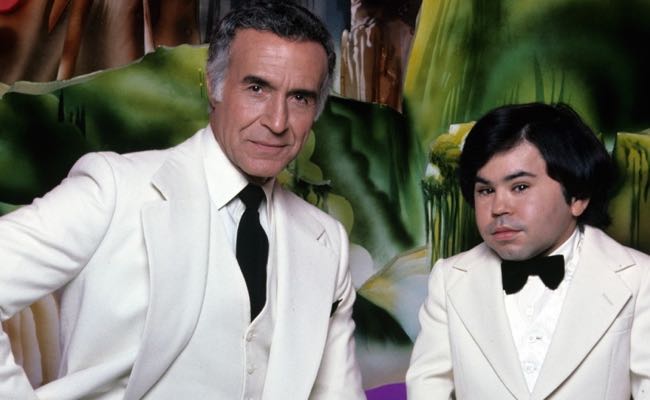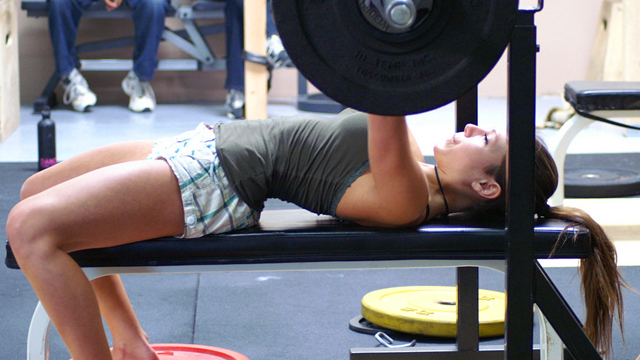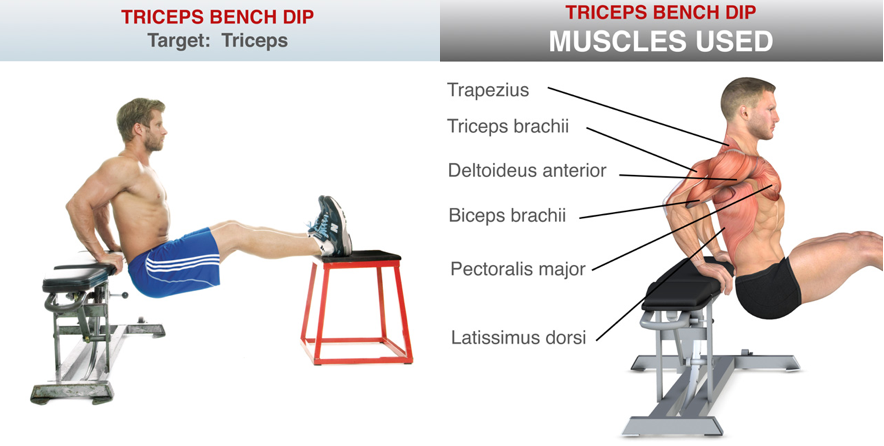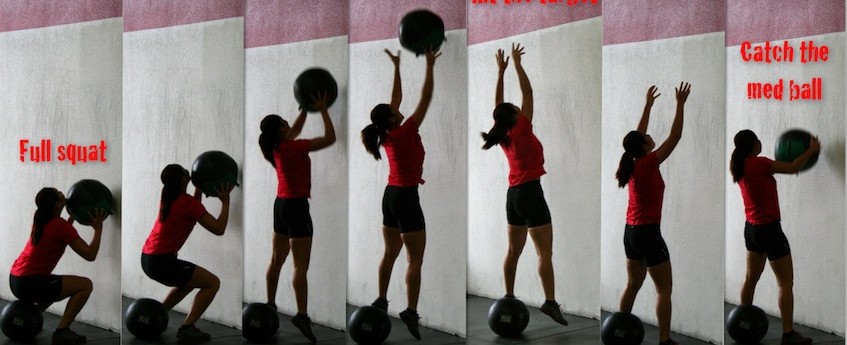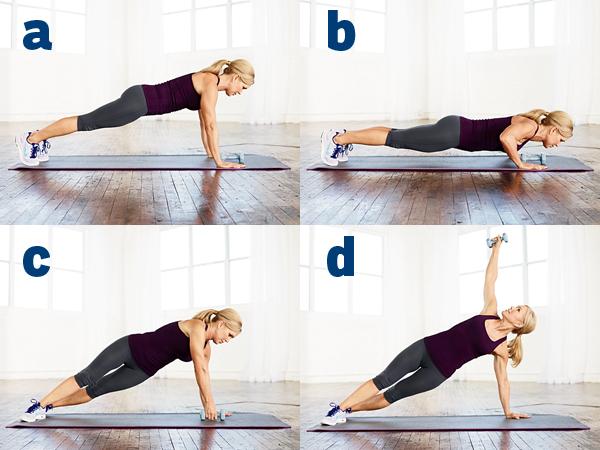Blow Up Your Chest With This Combo Move
Fitness March 17, 2024 Damon Mitchell
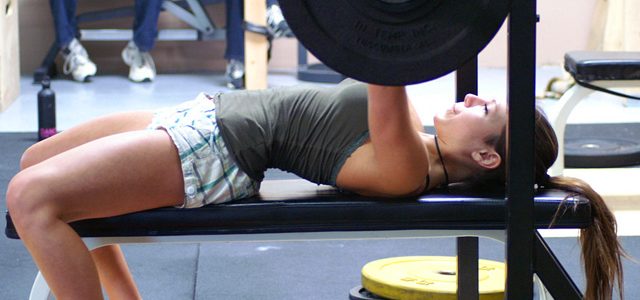
Having a well-sculpted chest is the secret wish of every gym rat, male or female, of any age. That said, having shoulders that still enjoy a full range of motion is the pipe dream of most us over forty. Can we have both?
This guy looks to be holding up pretty well…
Alright, so that’s a prosthetic.
The problem for most of us arises from the techniques we used before our bodies taught us about real pain. Regardless of how we started out in fitness, aesthetics or otherwise, most of us prioritize functionality eventually. The good news is, you can have both. You can develop your chest without destroying your shoulders, starting right now.
The easiest way to volumize is to stack your exercises instead of compromising your technique. In this case, we are talking about the super-super stack. This is a combination of three exercises geared towards nailing every fiber of your chest and triceps. You will leave the gym with swagger, even if you don’t like the word swagger.
We’re going to apply the same rules as the killer leg workout. Ricardo Montalban and Frito Bandito will be monitoring your adherence. These guys don’t play around.
The rules:
- No rest between exercises. You may take 60 seconds between sets if you need.
- There are no points earned for speed, but the range of motion is worth double.
- Additional points are earned for slowing down the concentric (negative) movements.
- There is no actual points system. Grade yourself a winner just for trying.
- Five sets. You can pyramid your weight, but get two sets of twenty reps, one at the start and one for the last set. If you don’t know what pyramid means, then stick with 20-rep sets (I.e. 20 squats, 20 lunges, 20 jumps).
Bench Press
If you don’t have time to watch Tony Gentilcore in the video above, your best resource for improving your bench is here.
There are essentially two schools on the bench, wide and close grip. The wide end of the spectrum serves the bodybuilding crowd [read: most gym folks] where the closer grips serve the Olympic lifting crowd. Neither is necessarily right or wrong, but if you are interested in using your shoulders to push the way they best configured, you will keep that grip close.
Put most of your energy into lowering that bar slowly. You can hammer it up if you have a little Thor in you, but don’t ever let it slam down. There is no school for that.
Here’s the technique:
- Feet parallel, hip to shoulder width apart. I prefer a wide stance.
- Just like my squat, I screw my feet into the ground, creating tension from my arch to my glutes. Left foot twists counterclockwise, right one goes clockwise. My weight is even on both feet for the whole move.
- Before I go anywhere I create tension in my body: squeeze the glutes, draw the belly button towards the anus, tighten the pelvic floor, pushing the shoulder blades down into the back pockets.
- To lift the bar off, I slide it up the rack until my arms are straight.
- I’m a big fan of taking a beat at the top to wind your shoulders into their sockets. You can do this by trying to bend the bar like superman.
- Lower the bar to your body, likely towards the bottom of your ribcage or top of your stomach. If your elbows are below your wrists, you’re golden.
- Press it back up, the bar above your shoulders.
- Repeat.
Dips
Skip to the 30-second mark on the video above. It’s short.
You can do your dips on the parallel bars or seated. Just know that seated dips create a multitude of variables, for which many folks cannot adjust.
However you do them, those shoulder blades should stay planted in your back pockets the whole time. Your elbows should aim back. Your depth should be as far as you can go without feeling like your going to tear our your shoulder.
If you have no range, then just work on negatives. Put yourself in the top position, then lower your weight, resisting the pull of gravity.
Nothing else will build your triceps strength faster.
Here’s the technique:
- Hands parallel, with your grip closed, grab the parallel bars.
- Attempt to bend the left one counterclockwise, right one clockwise. If you’re on the edge of a chair, you can still create this tension.
- Your body should be tight, starting from your feet. I like to point my toes.
- On the parallel bars, you may let your legs float in front of you somewhat or you can flex your glutes, putting your feet behind you. I do both. Uncross those feet.
- Lower to your lowest controllable point, then press back up.
- Repeat.
Medicine Ball Chest Passes or Wall Balls (Two options)
The above basketball chest pass video covers some basic technique that parlays to good medicine ball technique.
Ultimately, whether you go chest pass or wall ball will come down to equipment.
If you have neither a medicine ball or a slosh ball, then you can use a basketball or larger sports ball. If you go slosh ball, you will be doing wall balls. If you go with something you can bounce off the wall, you will be doing chest passes.
As an alternative, you can grab a partner, passing the med-ball between you. Just, beware of losing teeth. Pick a partner about your strength.
Here’s the technique:
- Starting position, same as my squat. Bend your knees a little.
- Start with the ball in both hands, your fingers wrapping around the outside of the ball.
- As you press the ball, it should explode away from you, either straight at the wall or up above you. Use the controlled force, less at first, until you get a sense of the bounce.
- The finishing position should be with your arms fully extended, and your thumbs pointing straight at your target.
- Be ready for that ball to come back. Cushion the landing.
- Repeat.
If you want to really drive things home, wrap this set of three with some windmill push-ups. Take care to keep your shoulder blades seated in those back pockets.
Alternatively, if you have a jump rope, 100 reps of jump rope between sets will really get your heart going. You will definitely want to take 60-seconds before diving back in if you jump rope.
Between sets, pound some water. Try to get your five sets, but if you can only do three to start, that’s cool. At the end of your workout, see if you can touch your elbows together across your chest. If you can, you need to do another set. [Joking]
Expect your chest to be sore for the next two days. If not, work in some dumbbell presses in, after your bench press.
Get ’em.

